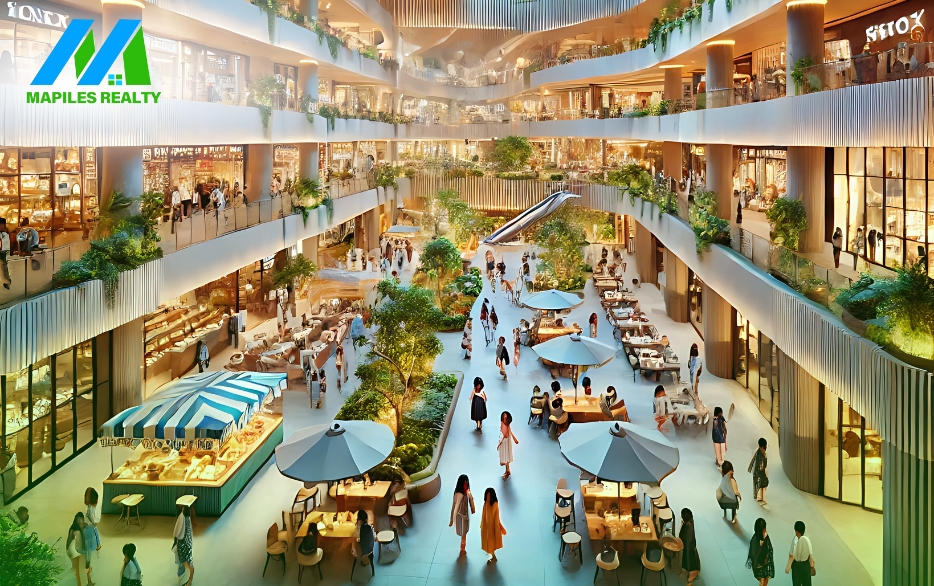Shopping malls in the Philippines are evolving beyond traditional retail. Gone are the days when people visited malls just to shop; now, they seek experiences that make their trips more meaningful and enjoyable.
The Shift from Shopping to Experience
Malls have always been a big part of Filipino culture. They serve as places not just for shopping but also for bonding, dining, and entertainment.
With the rise of e-commerce, traditional malls had to adapt. Online shopping offers convenience, but physical malls provide experiences that can’t be replicated on a screen.
Developers are now shifting their focus from selling products to creating engaging experiences. This strategy keeps customers coming back and helps malls stay relevant in today’s digital age.
The Rise of Experiential Retail
Experiential retail is all about creating immersive and interactive environments. It combines shopping with entertainment, art, and leisure to enhance the customer journey.
Many malls in the Philippines are incorporating interactive attractions, themed zones, and Instagram-worthy spots. These elements encourage visitors to spend more time inside the mall and share their experiences on social media.
How Philippine Malls Are Adapting
Leading mall developers in the country are transforming their spaces to align with the experiential retail trend. SM Supermalls, Ayala Malls, and Robinsons Malls are among those leading the way.
They are adding innovative features like interactive art installations, augmented reality experiences, and live performances. These elements turn a simple mall visit into a fun-filled adventure.
Expanding Dining and Food Experiences
Food courts and restaurants are evolving to offer more than just meals. Many malls now feature food markets, al fresco dining areas, and themed food halls.
Unique dining concepts, such as food parks and chef-led experiences, are attracting food lovers. These spaces create an inviting atmosphere where people can socialize and explore different cuisines.
Incorporating Entertainment and Leisure Activities
Modern malls are integrating entertainment zones that go beyond cinemas and arcades. Indoor theme parks, escape rooms, and virtual reality experiences are becoming popular attractions.
For example, SM Megamall’s Mega Fashion Hall introduced an Olympic-sized ice skating rink, while Ayala Malls’ Circuit Makati features a world-class performing arts theater. These attractions give people more reasons to visit beyond shopping.
The Impact of Social Media
Social media plays a huge role in the popularity of experiential retail. People love sharing their experiences online, and malls are taking advantage of this trend.
Instagrammable spots, interactive exhibits, and pop-up installations encourage visitors to take photos and post them on social media. This organic promotion attracts more foot traffic and keeps malls buzzing with activity.
Pop-Up Stores and Seasonal Events
Another way malls are creating experiences is through pop-up stores and themed events. These limited-time attractions generate excitement and give shoppers something new to look forward to.
Seasonal markets, celebrity meet-and-greets, and product launches help keep mall spaces dynamic. These events provide a fresh experience with every visit, making malls more than just shopping destinations.
The Role of Technology in Enhancing Experiences
Technology is playing a big role in shaping the future of malls. Augmented reality (AR), virtual reality (VR), and smart directories make shopping more engaging and convenient.
For instance, some malls use AR to create interactive experiences, such as virtual fitting rooms or navigation tools that help shoppers find stores easily. These innovations enhance customer satisfaction and keep them engaged.
Wellness and Lifestyle Centers
Malls are also incorporating wellness and fitness spaces to cater to health-conscious individuals. Yoga studios, meditation rooms, and fitness centers are becoming common additions to modern shopping complexes.
These wellness hubs encourage a more holistic lifestyle, attracting visitors who want to stay active while enjoying the mall experience. It’s a shift towards making malls a place for self-care and relaxation.
Sustainability and Green Spaces
Environmental consciousness is also shaping mall developments. Green spaces, indoor gardens, and eco-friendly designs are now part of the mall landscape.
For example, Vertis North in Quezon City features an open-air park where visitors can relax and unwind. This integration of nature into malls enhances the overall customer experience while promoting sustainability.
The Future of Malls in the Philippines
Experiential retail is redefining the future of malls in the Philippines. The focus is shifting from merely selling products to creating memorable experiences that keep people engaged.
As shopping habits continue to evolve, malls will need to keep innovating. By blending retail with entertainment, dining, and technology, they can remain vibrant and relevant in the years to come.
Conclusion
Philippine malls are no longer just places to shop—they are destinations for experiences. From interactive installations to themed dining areas, these developments are changing how people view mall visits.
By embracing experiential retail, malls can continue to thrive despite the rise of e-commerce. The future of shopping centers lies in creating meaningful and enjoyable moments that bring people together.





